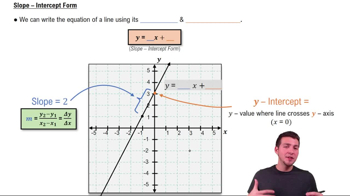Textbook Question
Which of the following statements are correct? Choose all that apply.
a. lim x→1 1/ (x−1)^2 does not exist
b. lim x→1 1/ (x−1)^2=∞
c. lim x→1 1/(x−1)^2=−∞
 Verified step by step guidance
Verified step by step guidance Verified video answer for a similar problem:
Verified video answer for a similar problem:



 5:21m
5:21mMaster Finding Limits by Direct Substitution with a bite sized video explanation from Patrick
Start learning